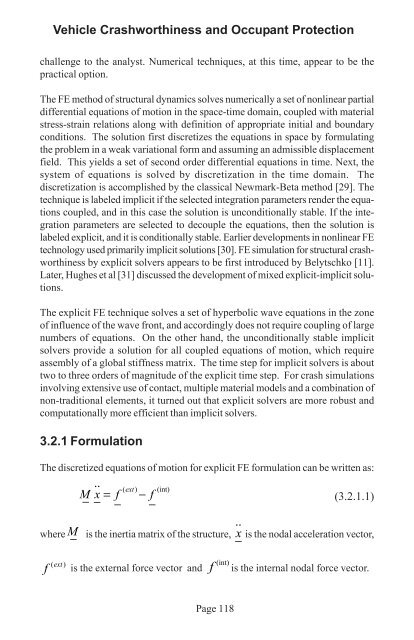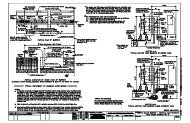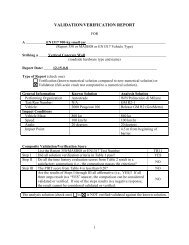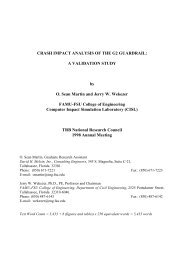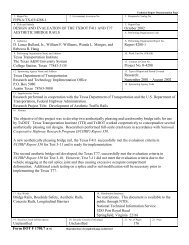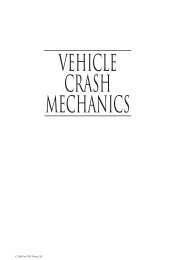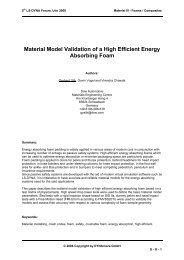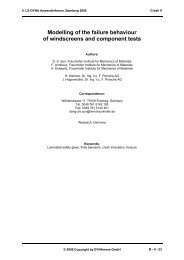Vehicle Crashworthiness and Occupant Protection - Chapter 3
Vehicle Crashworthiness and Occupant Protection - Chapter 3
Vehicle Crashworthiness and Occupant Protection - Chapter 3
You also want an ePaper? Increase the reach of your titles
YUMPU automatically turns print PDFs into web optimized ePapers that Google loves.
<strong>Vehicle</strong> <strong>Crashworthiness</strong> <strong>and</strong> <strong>Occupant</strong> <strong>Protection</strong><br />
challenge to the analyst. Numerical techniques, at this time, appear to be the<br />
practical option.<br />
The FE method of structural dynamics solves numerically a set of nonlinear partial<br />
differential equations of motion in the space-time domain, coupled with material<br />
stress-strain relations along with definition of appropriate initial <strong>and</strong> boundary<br />
conditions. The solution first discretizes the equations in space by formulating<br />
the problem in a weak variational form <strong>and</strong> assuming an admissible displacement<br />
field. This yields a set of second order differential equations in time. Next, the<br />
system of equations is solved by discretization in the time domain. The<br />
discretization is accomplished by the classical Newmark-Beta method [29]. The<br />
technique is labeled implicit if the selected integration parameters render the equations<br />
coupled, <strong>and</strong> in this case the solution is unconditionally stable. If the integration<br />
parameters are selected to decouple the equations, then the solution is<br />
labeled explicit, <strong>and</strong> it is conditionally stable. Earlier developments in nonlinear FE<br />
technology used primarily implicit solutions [30]. FE simulation for structural crashworthiness<br />
by explicit solvers appears to be first introduced by Belytschko [11].<br />
Later, Hughes et al [31] discussed the development of mixed explicit-implicit solutions.<br />
The explicit FE technique solves a set of hyperbolic wave equations in the zone<br />
of influence of the wave front, <strong>and</strong> accordingly does not require coupling of large<br />
numbers of equations. On the other h<strong>and</strong>, the unconditionally stable implicit<br />
solvers provide a solution for all coupled equations of motion, which require<br />
assembly of a global stiffness matrix. The time step for implicit solvers is about<br />
two to three orders of magnitude of the explicit time step. For crash simulations<br />
involving extensive use of contact, multiple material models <strong>and</strong> a combination of<br />
non-traditional elements, it turned out that explicit solvers are more robust <strong>and</strong><br />
computationally more efficient than implicit solvers.<br />
3.2.1 Formulation<br />
The discretized equations of motion for explicit FE formulation can be written as:<br />
..<br />
( ext)<br />
(int)<br />
M x = f − f<br />
− −<br />
(3.2.1.1)<br />
− −<br />
..<br />
where M −<br />
is the inertia matrix of the structure, x is the nodal acceleration vector,<br />
−<br />
(ext)<br />
f is the external force vector <strong>and</strong><br />
f<br />
(int)<br />
is the internal nodal force vector.<br />
Page 118


